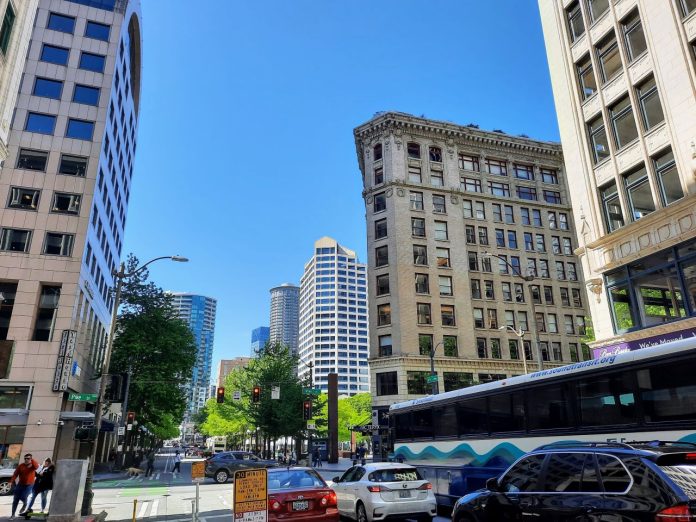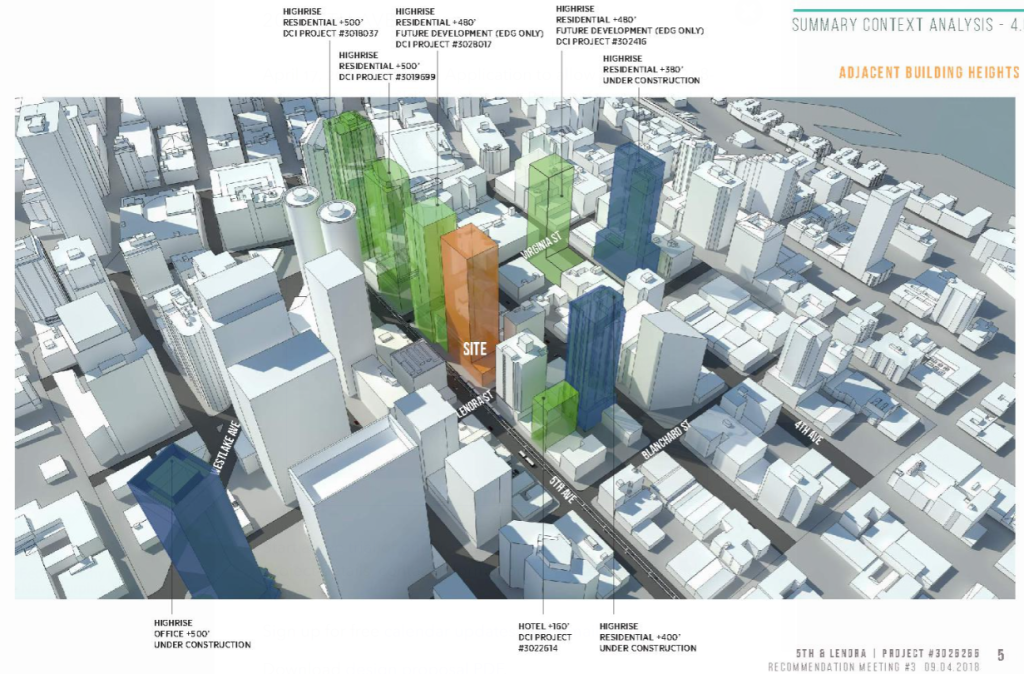
Conservatives keep saying Seattle is dying, but repetition hasn’t made it true. Despite the gloom and doomsday pronouncements, Seattle is very much alive and kicking. In fact, Seattle is the fastest growing big city in America — again — as Gene Balk noted in an FYI Guy column yesterday citing new United States Census Bureau figures showing Seattle hit 769,700 on July 1, 2020 — 2.2% growth year-to-year. It was just 2017 when we crossed the 700,000 mark.
That data is reflected on the ground. Walk around Denny Triangle or Belltown or the University District or First Hill or Stone Way or Roosevelt and the construction cranes envelope you. Thousands of apartments continue to rise. More than that, sidewalks continue to bustle with life. Street cafes have popped up all over the place and added to the ambience and flavor of the city.
Mount Tahoma is still majestic and jutting right where it belongs on the horizon on a clear day. The Salish Sea is still to the west. The Pacific oysters still taste amazing and Atlantic ones still taste like garbage. Three national parks are still in our backyard. Olympic National Park — one of the quietest, wettest, and mossiest places in the country — is still a few hours to the west, as is Rainier National Park to the south and North Cascades Park to the northeast. Meanwhile, Dallas is still as flat and featureless as a cookie sheet broiling in the Texas sun.
As much as right-wing cultists try to conjure an image of a crime-ridden corrupt failing city, the real Seattle just won’t die. I’m sure many Seattleites share my experience: relatives who live far away (especially the conservative ones) trying to explain Seattle is dangerous, disorganized, and falling into chaos based on something they saw on TV or some godforsaken corner of the internet — firsthand experiences of actual residents to whom they are related be damned.
Some of the external angst seems to sink in. The Downtown Seattle Association has fretted over an economic slump in the central business district which they blamed on crime and disorder, as did New Urbanist author Richard Florida when he phoned in for Crosscut Festival, peddling his ‘Downtown Disorder Syndrome’ narrative. This hypothesis seems to blame protesters and progressive lawmakers for creating the “disorder” and neglecting to nurture the business environment. It’s not as blunt as Sinclair-owned KOMO in calling for more incarceration and locking up people experiencing homelessness — who are all assumed to be addicts — for forced drug treatment. But it still basically accepts the premise that Seattle is broken and needs to get tough on crime and “disorder.”
But if Downtown Seattle really was in a crisis, we would expect banks and developers to be running away. That doesn’t seem to be happening. The pipeline of large projects doesn’t seem to be petering out, whether in Downtown or in urban hubs across the city. For example, a 44-story apartment project at 5th Avenue and Virginia Street is proceeding with a design review on June 15th, advancing the plan for 440 homes. On the same block, Vulcan is building another 44-story tower with 458 homes and is close to breaking ground. In general, skyscrapers seem to be climbing farther northwest up streets like 5th Avenue, as shown in the rendering below.
The Civic Square project across from City Hall is close to finally breaking ground to erect a 58-story story condo building, which would end a 16-year saga to redevelop the Public Safety Building instead of leaving it a hole in the ground. And in the University District, several towers are rising, even with the Mandatory Housing Affordability fees some had worried would weigh them down — ditto First Hill and on the waterfront, which is newly freed from the shadow and stench of the demolished Alaskan Way Viaduct. Lake City has hundreds and hundreds of apartments on the way, as does Northgate and Greenwood and Ballard and Mount Baker and Columbia City and Junction and so on.
The vitality and heartbeat of a city isn’t measured in construction cranes and development proposals, but it’s a pretty good sign it’s not about ready to croak.
This isn’t to say Seattle doesn’t have problems; it has real challenges to face. Homelessness is stubbornly high, tenants are struggling with severe rent burdens, housing is too expensive, somehow most of the city is still cordoned off for single-family homes, and the state has blocked most progressive revenue options to build social housing. But those problems are surmountable, especially when people have confidence Seattle has the vigor to survive a new tax or housing debate or conservative smear campaign.
And Seattle’s politics do seem to be shifting in a progressive direction to meet the new challenges. Seattle and SeaTac were the first to pass a $15 minimum wage. Economists predicted doom and a University of Washington study even claimed to have found evidence of job loss, but later studies reversed that and confirmed workers benefited from higher wages, as did the economy at large. Surprise, surprise!
Last year, the City Council passed Jumpstart Seattle, a progressive payroll tax projected to raise $214 million per year and boost social housing investment, economic recovery, and equitable development. It passed despite stiff resistance and economic doom predictions from Amazon and the Seattle Metropolitan Chamber of Commerce, which is suing in an attempt to block the tax.
Jumpstart ended up being essential to avoiding deep social service cuts in the fall, as Mayor Jenny Durkan, who declined to sign the tax, felt no qualms about raiding it to balance her budget. Facing fierce opposition from the Mayor, the Council also voted to cut the Seattle Police Department (SPD) budget by 18% after it became clear police reform efforts were stalled out and SPD’s budget had grown bloated, swelling by 36% in five years. Seattle also voted with an overwhelming 80% majority to boost bus service to support essential workers and come out of the pandemic strong, complimenting ambitious voter-approved light rail expansion plans.
Before our eyes old orthodoxies are falling by the wayside, like the firm belief that police budgets must always go up, social services must go down at the first sign of crisis, minimum wages must stay flat to promote job growth, and corporate taxes must be avoided to keep big companies from fleeing. Overthrowing these orthodoxies to make progressive change makes Seattle a great place to live, defying the doomsayers. Ironically, it’s also these changes that so vexes conservatives and centrists, bringing on their paranoid backlash.
Growing faster than any other major city in the country, Seattle somehow got tagged as a laggard and failure. It’s funny the stories people spin. But it’s tough to rewrite characters who are walking and breathing and ready to tell their own story without the reactionary funhouse mirror effect.
Doug Trumm is publisher of The Urbanist. An Urbanist writer since 2015, he dreams of pedestrian streets, bus lanes, and a mass-timber building spree to end our housing crisis. He graduated from the Evans School of Public Policy and Governance at the University of Washington in 2019. He lives in Seattle's Fremont neighborhood and loves to explore the city by foot and by bike.



